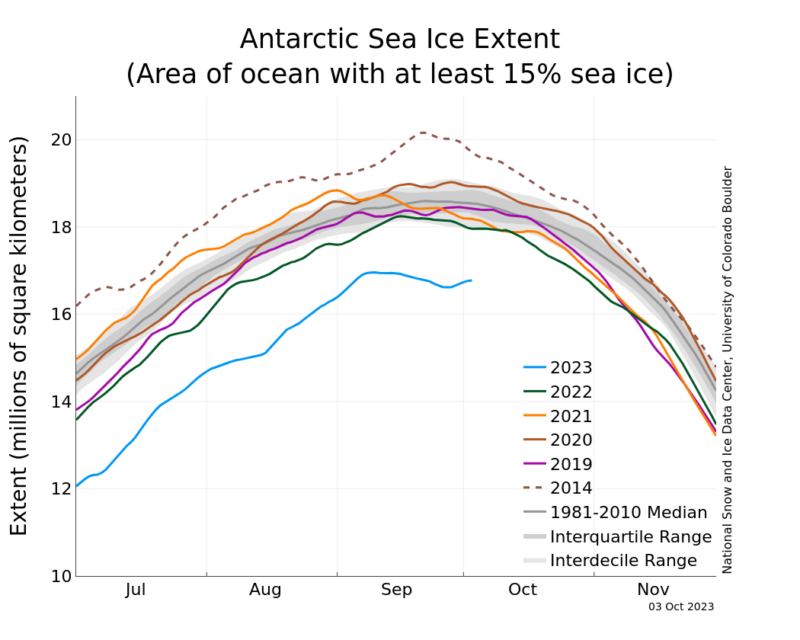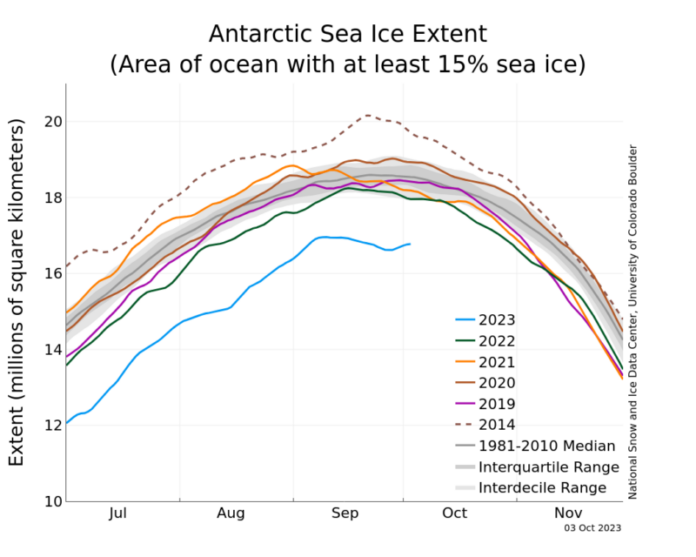
Enlarge / 2023 has been a remarkable year for Antarctic sea ice. (credit: National Snow and Ice Data Center)
Sometimes, data points deemed to be “outliers” are met with suspicion—possibly the result of an error in the measuring process, for example. But outliers can also represent a puzzling thing that really happened. This year’s floating sea ice cover around Antarctica falls into that latter category.
On September 25, the US National Snow and Ice Data Center (NSIDC) published preliminary dates and numbers for the annual maximum sea ice coverage in the Antarctic and minimum coverage in the Arctic. With the last few days of September in the books, NSIDC noted Wednesday that those determinations have held.
Arctic sea ice
Arctic sea ice coverage hit its end-of-summer low point on September 19, the sixth lowest in the satellite record that started in 1979. The average across all of September was fifth lowest. The record is still held by an unusual 2012 season, but sea ice is steadily declining over time.
Read 8 remaining paragraphs | Comments
Ars Technica - All contentContinue reading/original-link]




